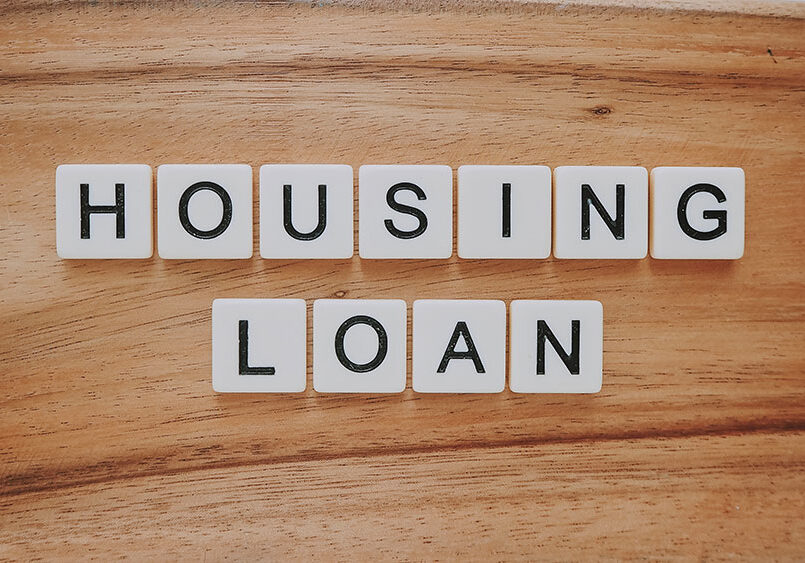Accunet’s Top 5 Rules for Smart Borrowing
Over the past 18 years, Accunet has seen its fair share of missteps and missed opportunities made by borrowers when purchasing or refinancing a home. Here’s what we think a prospective borrower would benefit from knowing before he or she decides how much to borrow and how fast to pay back the mortgage.
Rule #1: “Right Size” Your Down Payment and Have at Least Six Months of Monthly Expenses in Non-Retirement Savings
That means you may only want to put 15% down when you’re buying instead of 20%, or 5% down instead of 10%, in order to leave yourself with a nice fat emergency fund rather than putting down every nickel you can scrape together. When life throws you a wild pitch like the sudden loss of a job, an unexpected baby, severe illness or an accident, the best thing to have is a nice chunk of change in the bank. Rich and generous relatives can serve the same function but are harder to come by.
Having a credit card or two with no balance and a high limit, or a home equity line of credit with no balance, can also fit the need for emergency funds. Remember, the time to apply for credit is when you don’t need it – sometimes when you need a loan the most, like when you’ve lost your job, you can’t get approved. Cash is king.
“But I don’t want to pay that evil private mortgage insurance (PMI) that comes with less than 20% down!” I hear you exclaiming. Let Accunet run the numbers for you, because you may be surprised to learn we offer loans with less than 20% down and no monthly PMI.
Here’s an example:
|
20% vs 15% Down | ||
| 20% down (Smith) | 15% down (Jones) | |
| Home Price | $250,000 | $250,000 |
| Down Payment | $50,000 | $37,500 |
| Monthly Payment | $1,355 | $1,430 |
| Extra Money Remaining After Closing | $0 | $12,500 |
Smith put $50,000 down (20%) on a $250,000 home. At 4% on a 30-year fixed rate loan, the monthly payment including $400 for property taxes and homeowners insurance is $1,355. Jones has enough money to put 20% down, but instead put 15% down on an identical home with the same $400 per month for taxes and homeowners insurance. Jones’s payment is only $75 more per month at 4.25% with no monthly PMI. But Jones has an extra $12,500 in the bank for a cushion.
Interestingly, if the $75 higher monthly payment ever became a hardship, Jones could take $75 a month out of that $12,500 emergency fund to supplement the monthly mortgage payment – and could do so for 167 payments (13.8 years)!
Rule #2: Prioritize Paying Off High-Interest Debts as Quickly as Possible While Taking Your Time Paying Off Low-Interest Debts (like mortgages)
What’s the highest rate debt most people have? Credit cards. The first piece of advice here is to not carry credit card balances from month-to-month, but if you have any credit card balances, work on paying off the ones with the highest interest rates first. And speaking of credit cards, don’t fall for the 0% balance transfer or 0% checks they send in the mail – there’s no such thing as 0% interest on a credit card, or not that I’ve seen anyway. The bank will always charge a cash advance fee of between 2% and 5% of the amount you borrow at 0%, and the 0% rate is only temporary anyway.
Mortgage rates (currently in the 3.5% to 4.25% range) are typically lower than the rates on any other loan balances you have. Under the new 2018 federal tax regulations, it may or may not be to your benefit to itemize your eligible tax deductions like mortgage interest in 2018 and beyond. However, if your particular circumstances make it advantageous to itemize your deductions (which happens on Schedule A of your 1040 individual return), your mortgage interest rate is “on sale.” For a person or couple who itemizes their deductions and who is in the 25% marginal federal income tax bracket, a 4% mortgage rate translates to just 3% on an after-tax basis (4% x 0.75 = 3%). Interest on credit card debt and car loans was not tax deductible last year nor is it deductible under the new tax code.
Whether the interest on a 4% mortgage is tax deductible or not, 4% still beats 6% on a student loan or 12% to 25% on a credit card balance. Don’t think about paying off your mortgage faster than scheduled until your other higher rate loans are paid off and until you read Rule #5 below.
Rule #3: Buy as Much Home as You Can Now
Why? Because mortgage rates are heading higher as the U.S. and global economies improve, and home prices are on the rise in almost every market as the largest generational demographic in America, millennials, enter their prime home buying years. Instead of buying that smaller two bedroom starter home and moving up to a larger home in five or seven years, consider stretching a bit and buying the three or four bedroom house that will suit your needs for the next 20 or 25 years.
Let’s say you could buy the larger “forever” home for $250,000 today with a $200,000 30-year fixed rate mortgage at 4%. Your principal and interest payment would be just $955. If you buy the smaller starter home today and wait to buy the larger forever home seven years from now, the price of the larger home will be $307,500 if home values increase 3% per year.
|
Buy Bigger Now or Wait 7 Years? | ||
| Buy Bigger Now | Buy Bigger in 7 Years | |
| Home Price | $250,000 | $307,500 (3% appreciation) |
| Down Payment | $50,000 | $61,500 |
| Loan Amount | $200,000 | $246,000 |
| Principal and Interest | $955/mo at 4% 30yr fixed | $1,321/mo at 5% 30yr fixed |
Yep, that’s the power of inflation. Putting 20% down and borrowing $246,000 at a future 30-year fixed rate of 5% makes your principal and interest payment $1,321 or $366 higher than if you bought the bigger house at today’s price and interest rate. At a 6% future mortgage rate (which sounds impossible but could happen), the principal and interest payment jumps to $1,475! Today’s rate and principal and interest payment of $955 for the same house sounds like a bargain because it very likely is.
Rule #4: Match the Length of the Loan to the Expected Life of the Thing You’re Financing.
Never finance a car with a home equity line of credit or long-term mortgage. The car is going to last five to 10 years. The home equity line payments are interest only, so it’s quite likely you’ll still have a balance on the home equity line and still be paying interest long after the car is in the junk yard.
Never finance a vacation on a home equity line of credit or credit card unless you can pay it off in six months or less. The vacation might last two weeks, but you could be paying interest for years.
It’s okay (and even smart) to finance home improvements on your 30-year mortgage, because the improvements should last 30 years. The same goes for a college education.
Rule #5: Consider Investing Instead of Paying Off Your Mortgage Faster
If you’re the kind of person who only puts money in CDs and FDIC-insured bank accounts, this idea is not for you unless interest rates really sky rocket back to 2007 levels when money market accounts were paying 5% (you can Google that). But here’s the simple question: If you have a spare $1,000, should you use it to pay down your fixed rate mortgage balance that has a fixed 4% rate or invest the $1,000 in something else? If you’re reasonably confident you or your investment adviser can earn an investment return of say 6% or more over a sufficient period of time, then don’t pay down the mortgage. Invest instead.
Remember, paying down your mortgage faster is like putting that money in a lock box. The only two ways to get it back out are to borrow it again (at a future unknown rate) or sell the property. And when you pay down your loan faster, your payment doesn’t change even though your loan balance is lower. Building up equity “outside of your home” in an investment account can be much more liquid and accessible, which one could argue is a benefit or a handicap depending on your financial discipline. But just like Rule #1, having liquidity (access to money) in a crisis can be a big benefit. By the way, it was a lack of liquidity that caused Bear Sterns and Lehman Brothers to meltdown in the financial crisis.
Hopefully these 5 Rules for Smart Borrowing will give you a baseline from which to start. When you’re ready to take the next step and buy that home or refinance, just click on the blue button and connect with one of our friendly Loan Consultants at Accunet. We’ll walk you through your options and help you understand the pro’s and con’s of each, and then choose the right option for you.
[elementor-template id=”10109″]
Want the Lowest Rate on Your Home Loan?
Let's Get Started!
You Might Also Like
Aenean sollicitudin egestas elit vel mattis. Proin non lorem arcu. Sed ornare venenatis sapien id iaculis. Etiam ultricies interdum commodo. Aliquam erat volutpat.


